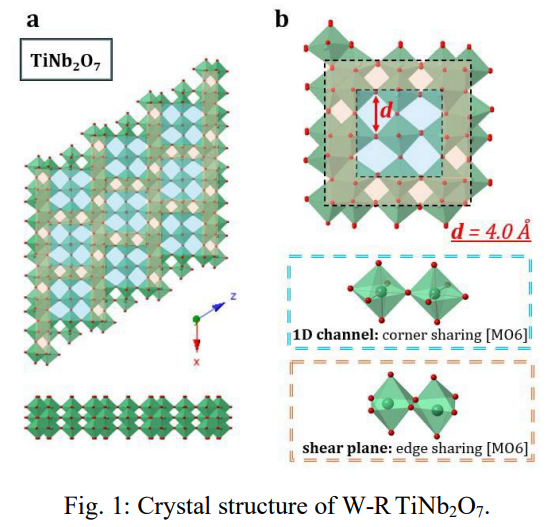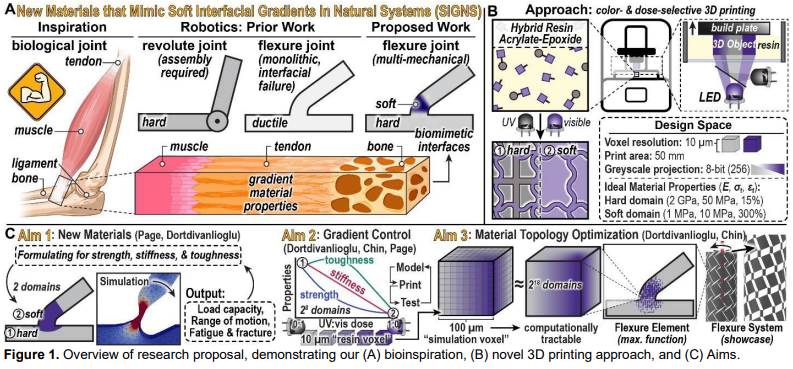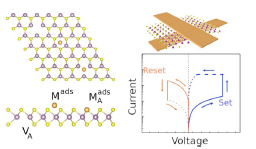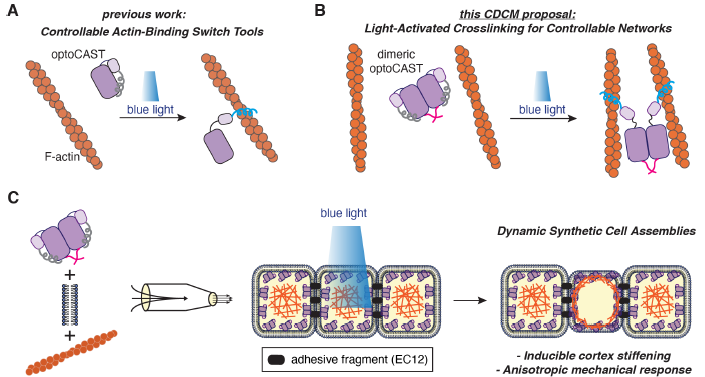CDCM Seed Projects
CDCM Seed Projects enable the Center to engage new faculty members and provide flexibility to incorporate emerging, potentially transformative research directions. Broad participation, including junior faculty members and small, interdisciplinary teams engaged in emerging areas of research, are emphasized. Open calls for seed project proposals will be issued annually.
Learn more about previous Seed Projects.
Accelerated Discovery of Wadsley-Roth Phase Bimetallic Oxides for Fast Electrochemical Storage of Earth-Abundant Ions - Dr. Kent Zheng, McKetta Department of Chemical Engineering

Currently, the most effective battery chemistries depend on Li-ion intercalation into host crystal structures, enabling reversible energy storage and release.1,2 Looking ahead, sustainable energy storage must address two key challenges: (1) diversifying beyond Li-ion chemistries, given Li’s scarcity in the Earth’s crust (abundance: 20 ppm) and geopolitical risks tied to Li- and Co-related minerals,3-5 and (2) enabling faster charging to broaden applications in electric vehicles and enhance grid storage efficiency.6,7 However, affordable Earth-abundant ionslike Na+ (23,600 ppm), Mg2+ (23,300 ppm), andAl3+ (82,300 ppm) present significant hurdles. Their larger size or higher charge density compared to Li+ disrupts host material lattices, slowing ion diffusion and reducing reversibility.8,9 The study of Li-ion storage materials has been ongoing for decades;1,10 we cannot afford to wait that long for post-Li-ion technologies key to carbon net zero by 2050.11 Discovering new materials that rapidly and reversibly store these ions requires holisticcodesign tailoring structures across multiple scales—from lattice (Å), to particle morphology (nm to µm), and electrode architecture (10 to 100 µm)—to render target ion storage behavior.12,13 Departing from conventional methods, we propose a synergistic data- and model-guided experimental approach to significantly accelerate the discovery of principles governing the electrochemical storage of Earth-abundant ions, focusing on structure-property relationships in materials with multiscale structural features optimized for such ions. While traditional experimental synthesis and measurement offer high accuracy, exhaustively studying ion storage behavior in a single material system can take years. Exploring the entire design space (i.e., chemical composition, stoichiometry, crystal structure, defect/doping, and particle morphology) using traditional trial-and-error approaches requires an impractically vast amount of time and research resources. To overcome this limitation, we will develop models using density functional theory (DFT) to generate a large volume of physics-based simulated data. This dataset will be used to train machine learning (ML) algorithms. The predictions made by ML will be assessed experimentally, forming an iterative feedback loop: Experiment-Model-Machine Learning-Experiment (EMME). We identify Wadsley-Roth (W-R) phase bimetallic oxide as a model material system to establish, refine, and validate the proposed EMME approach in our one-year seed project. The choice of W-R phase bimetallic oxides is driven by their unique, chemically tunable crystal structures (Fig. 1). 14 Specifically, W-R phases exhibit 1D open channels of unusually large size, formed by ReO3-like corner-sharing [MO6] octahedra. However, unlike a pure ReO3 structure, W-R phases also contain edge-sharing [MO6] octahedra within so-called “shear planes,” which provide structural stability during ion intercalation. Most importantly, these structural features—the size and arrangement of the 1D channels and the prevalence of shear planes—are highly tunable by adjusting the ratio between the two constituent transition metals.15 These features at small length scales give rise to unconventional ultrafast Li-ion transport behavior. For example, W-R phase Titanium Niobium Oxide (TNO) have demonstrated an exotic regime called “intercalation pseudo-capacitance” giving rise to unprecedented rate capability for Li-ion storage, making TNO an emerging commercial Li-ion anode Fig. 1: Crystal structure of W-RTiNb2O7. 2 Zheng,Kent-#7190 40 of 160 material.16,17 Unfortunately, such unconventional ion transport and storage behavior has yet to be realized for Earth-abundant ions, such as Na+; the charge-discharge is dominated by surface processes,18-20 rather than utilization of entire particles.
Designing 3D-Printable Materials that Mimic Soft Interfacial Gradients in Natural Systems (SIGNS) - Dr. Zachariah Page, McKetta Department of Chemical Engineering

Materials with mechanical gradients between stiff and soft domains are ubiquitous in nature. From bird talons to turtle shells to muscle-bone junctions, these Soft Interfacial Gradients in Natural Systems (SIGNS) synergistically impart bulk strength and toughness, while enabling programmable movement.1–4 However, our ability to produce synthetic analogs of SIGNS with geometric precision is lacking.5–7 Emergent light-based 3D printing technologies offer a promising approach through its precise, rapid, and cost-effective fabrication of complex materials, but still falls short of the desired continuum of material properties.8–11 Achieving SIGNS requires new design principles linking structure, processing, and properties in 3D-printable materials. Success herein would be transformative for a myriad of technologies, including soft robotics, wearable electronics and personal protective equipment. This proposal integrates resin development, material modeling, and mechanical characterization to advance all-polymer 3D-printed composites (Fig. 1). We envision a direct route to enrich these efforts in a future IRG, extending beyond mechanical gradients to optical, thermal, and electrical properties, leveraging theory from atomistic to macro scales and accelerating progress via machine learning. The interdisciplinary nature of 3D printing fosters research and educational collaborations across UT Austin, with outreach through Texas InventionWorks aligning with MRSEC’s core mission.
Accelerated discovery of designer defects in heterostructures with low dimensional materials - Dr. Wennie Wang, McKetta Department of Chemical Engineering

Diversification of memory and storage technologies and improvements of 10x-100x in capacity and energy efficiency are required in light of the growing energy consumption with current architectures, which will necessitate novel materials platforms. We focus on memristors based on monolayer to few-layer low-dimensional materials, dubbed ‘atomristors.’ Atomristors have been shown to undergo resistive switching through the formation and dissolution of point defects involving the adsorption of a metal adatom. Memristors based on two dimensional materials are quickly becoming competitive with existing technologies. Despite intense study, there is still a huge variability in reported switching behavior in 2D materials. The origin of such challenges is a severely limited understanding of defects in 2D materials, the vast space of candidate 2D materials and electrodes, and the need for a materials-based model to describe switching behavior. There is thus a critical need to develop new physical models and automated computational tools for accelerating defect engineering in 2D materials.
Our long-term goal is to accelerate the realization of two-dimensional materials as high-density and energy-efficient platforms in memristive technologies. The overall objective of the proposed work is computer-assisted prediction (first-principles combined with machine learning) for novel 2D materials with low switching energy and high ON/OFF ratios of resistive switching in bipolar memristor devices. Our central premise is that the interface between the monolayer and electrode is an essential component to accurately predict the switching energy and ON/OFF ratio. That is, the switching energy and changes in the conductivity can be computationally predicted in heterostructures and used to screen through optimal materials for memristor devices. Our rationale is based on our physical model for resistive switching and preliminary data on a small subset of systems, as described below.
Light-Activated Cytoskeletal Crosslinkers for Controllable Network Assemblies - Dr. Brian Belardi, McKetta Department of Chemical Engineering

During organ development, tissues – structures composed of many cells – undergo dramatic 3-D transformations, giving rise to complex morphologies and a variety of material properties. Building synthetic systems that emulate these transformations but with user controlled initiation and precision holds great promise for a variety of applications in biomedicine, next-generation materials, and computing, among others. Cells within tissue change shape and mechanics by re-organizing their cytoskeleton. Consisting of long persistence length polymeric structures, such as actin and intermediate filaments as well as microtubules, the cytoskeleton is assembled into networks through the action of binding proteins that interface multiple cytoplasmic polymers together in varying arrangements. Diverse and dynamic polymeric networks that make up the cytoskeleton impart unique mechanics to individual cells and across tissue, leading to phenomena such as superelasticity. This project aims to develop in vitro actin crosslinkers that are light sensitive. In this way, purified actin networks, and thereby their physical properties, such as stiffness, can be controlled dynamically with light. Our ultimate goal is to encapsulate actin filaments in adhered synthetic cells (micron-sized lipid bilayer vesicles) with light-activated crosslinkers tethered to inner membranes (. By illuminating select vesicles, dynamic mechanical patterning of a synthetic cell-based material can be realized, bringing us one step closer to mimicking the transformations of living tissue synthetically.

